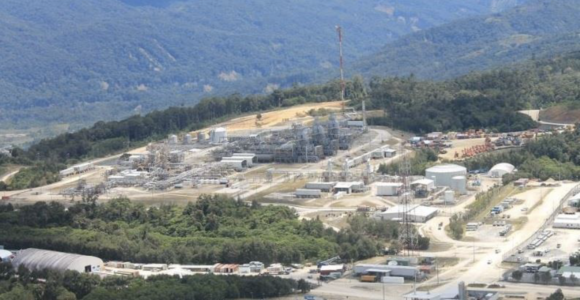The World Bank has released its latest half-yearly appraisal of Papua New Guinea’s economy. It confirms PNG’s economy contracted last year but predicts it will bounce back over the next three years, subject to some ‘rising uncertainties’.

Credit: Wilfred Lus
Papua New Guinea’s growth outlook remains fragile due to ‘rising uncertainties’, according to the World Bank’s latest Papua New Guinea Economic Update, released last week.
Subtitled ‘Recovery amid uncertainty’, the update says PNG’s economy actually contracted by 0.5 per cent during 2018, mainly due to a drop in the performance of the extractive sector.
However, the bank is forecasting real GDP growth will jump to 5.6 per cent in 2019, and it expects PNG’s growth ‘to hover between 3.1 per cent and 3.5 per cent in 2020–21’.

The World Bank’s update expects the extractive sector to lead future GDP growth. Credit: World Bank
At the same time, the report describes that the 2019 National Budget delivered at the end of 2018 by then-Treasurer Charles Abel is ‘unrealistic’.
This echoes the June statement to Parliament of PNG’s new Treasurer, Sam Basil, who raised the possibility of a budget adjustment following the release of Treasury’s Mid-Year Economic and Fiscal Outlook, due by the end of this month.
Uncertainties
The global outlook may have an impact on PNG’s progress in coming years, says the report.
Global growth prospects remain fragile, with the report highlighting ‘recently-renewed trade tensions among major economies and an observed decline in investor sentiment worldwide report.’
The bank has downgraded its global growth forecasts for 2019 from 3 per cent to 2.6 per cent, warning that ‘there are potential negative implications for Papua New Guinea’s economy should external demand for its exports soften.’
It points out that ‘short-term economic growth prospects of Papua New Guinea’s major trading partners—Australia, China, and Japan—are generally deteriorating.’
LNG positive
The report contains some positives messages too, notably around LNG, PNG’s largest export earner.
‘Demand for LNG in Taiwan, China—Papua New Guinea’s third largest LNG trade partner—rose by an average of 5 per cent per year in 2012–18, supporting the outlook of growing regional demand over the medium term.’
‘The sustainability of government debt has deteriorated and is far from assured.’
The report also notes the improved revenues to government from the extractive sector.
However, growth in other sectors of the economy will be modest this year, with the bank’s report observing that the brief stimulus delivered by PNG hosting APEC in 2018 is now over.
What PNG needs to do
The World Bank has also identified some issues that the new Marape Government needs to address.
While noting the improved availability of foreign exchange after a long period of shortages, it warns ‘these gains are at risk of being lost if the authorities do not return to the earlier-adopted fiscal-consolidation path and refocus on establishing a more flexible exchange rate regime.’
That means addressing government deficits and debt levels. ‘The sustainability of government debt has deteriorated and is far from assured,’ it warns.
‘PNG achieved an overall trade surplus to 25.8 per cent of GDP in 2018, its highest level in over a decade.’
The report also recommends structural reforms to assist the development of certain sectors in PNG’s economy, including agriculture, which is a major focus of the report.
‘To realise the potential of agriculture as a source of income and job creation, the authorities should consider policy options and responses that will secure sustainable rural livelihoods in food and agriculture.
The report identifies the bank’s own US$50 million (K169 million) Productive Partnerships in Agriculture Project and its follow-on US$40 million (K135 million) Agriculture Commercialization and Diversification Project as innovative solutions to follow.
Some key indicators from the Word Bank report
- The PNG kina is set for its seventh successive year of decline in its nominal exchange rate.
- Annual consumer price inflation averaged 4.5 per cent in 2018 and in the first quarter of 2019, its slowest pace in six years.
- PNG achieved an overall trade surplus to 25.8 per cent of GDP in 2018, its highest level in over a decade.
- PNG’s non-extractive economy is expected to show stable average annual growth rates over 2019–21, with agriculture, forestry, and fishery growing by 3 per cent per year, manufacturing by 3.5 per cent, and the services sector by 3 per cent.








Speak Your Mind